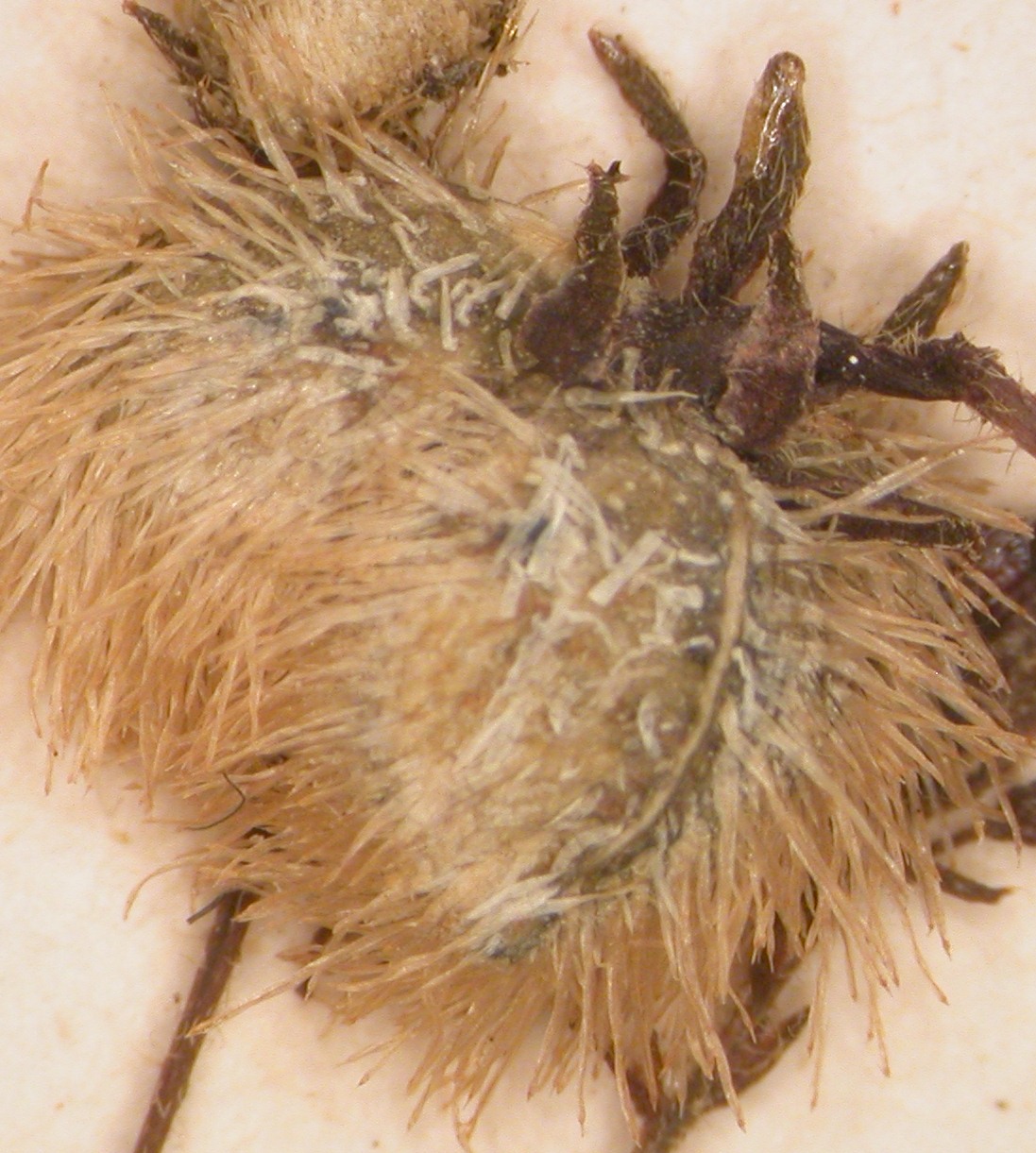Nettleleaf Noseburn
(Tragia nepetifolia)

Description
Herbs or subshrubs, 2-7 dm. Stems erect, green, apex never flexuous. Leaves: petiole 3-15 mm; blade triangular-lanceolate, 2.7-6.7 - 1-3 cm, base truncate to cordate, margins serrate, apex acute. Inflorescences terminal (appearing leaf opposed), glands absent, staminate flowers 11-40 per raceme, evenly distributed; staminate bracts 1-1.5 mm. Pedicels: staminate 1.5-2 mm, persistent base 1-1.8 mm, longer than subtending bract; pistillate 3-4 mm in fruit. Staminate flowers: sepals 3, green, 1.2-2.1 mm; stamens 3, filaments 0.3-0.8 mm. Pistillate flowers: sepals lanceolate-ovate, 1.3-2.3 mm; styles connate 1/3 length; stigmas papillate. Capsules 7-8 mm wide. Seeds dark brown, 3-4 mm. 2N = 44. Flowering late spring-summer; fruiting summer-fall. Dry, sandy soils, open pine-oak woods, hardwoods, rock ledges, fields; 10-600 m; Ala., Ark., Fla., Ga., La., Miss., N.C., S.C., Tenn., Tex., Va.Plants of Tragia urticifolia are easily distinguished from those of other non-glandular North American members of Tragia by the persistent bases of its staminate pedicels, which are long-extended beyond their subtending bracts. Although similar to T. betonicifolia, T. urticifolia has fewer stems, shorter pistillate sepals, inflorescences with fewer staminate flowers that are not distally clustered, and leaf blades with very light green abaxial surfaces.
Taxonomic tree:







